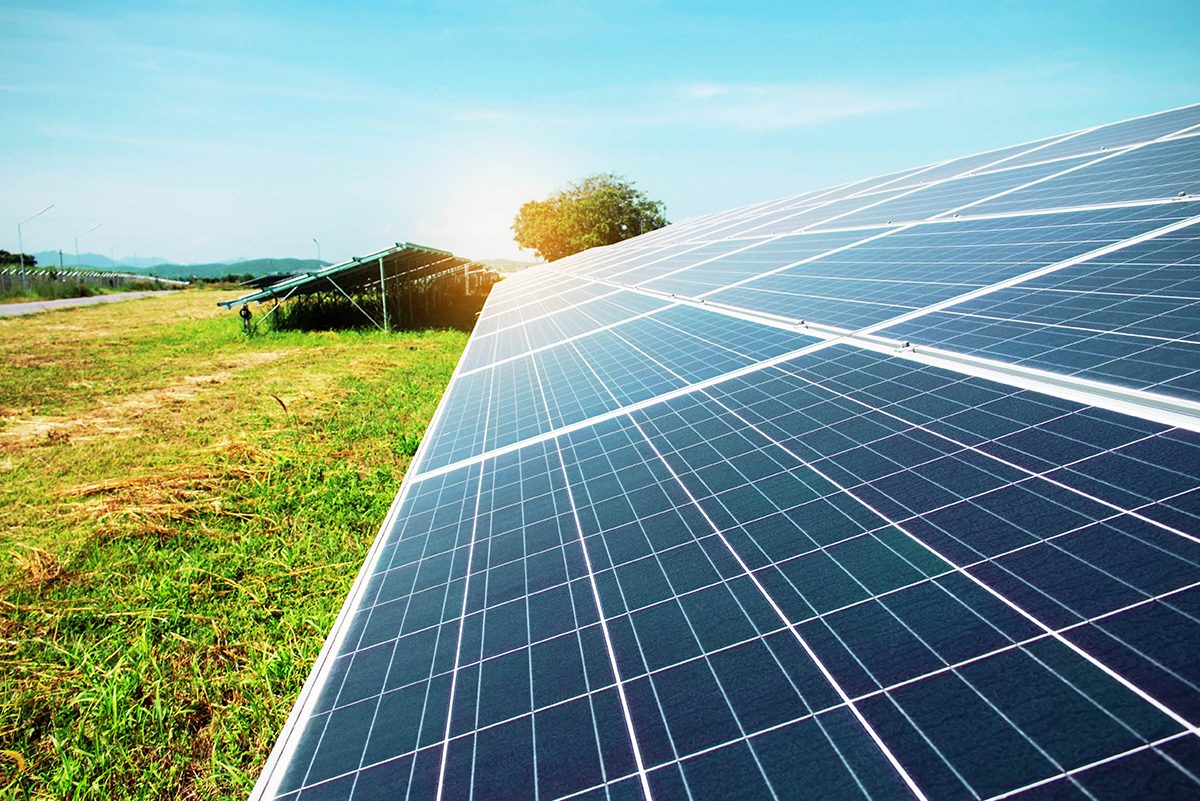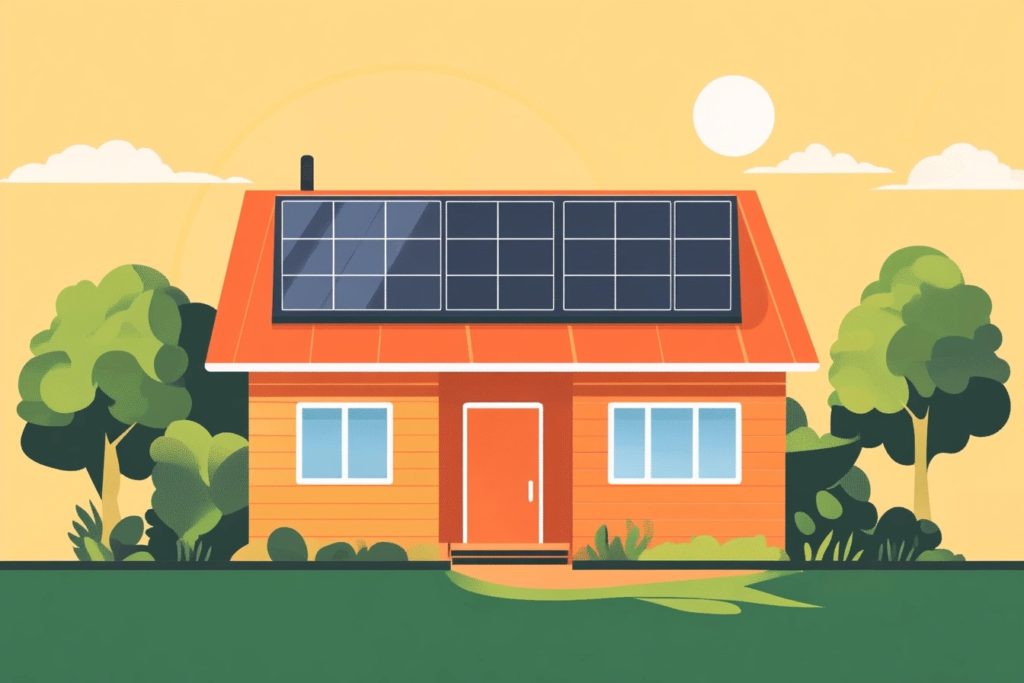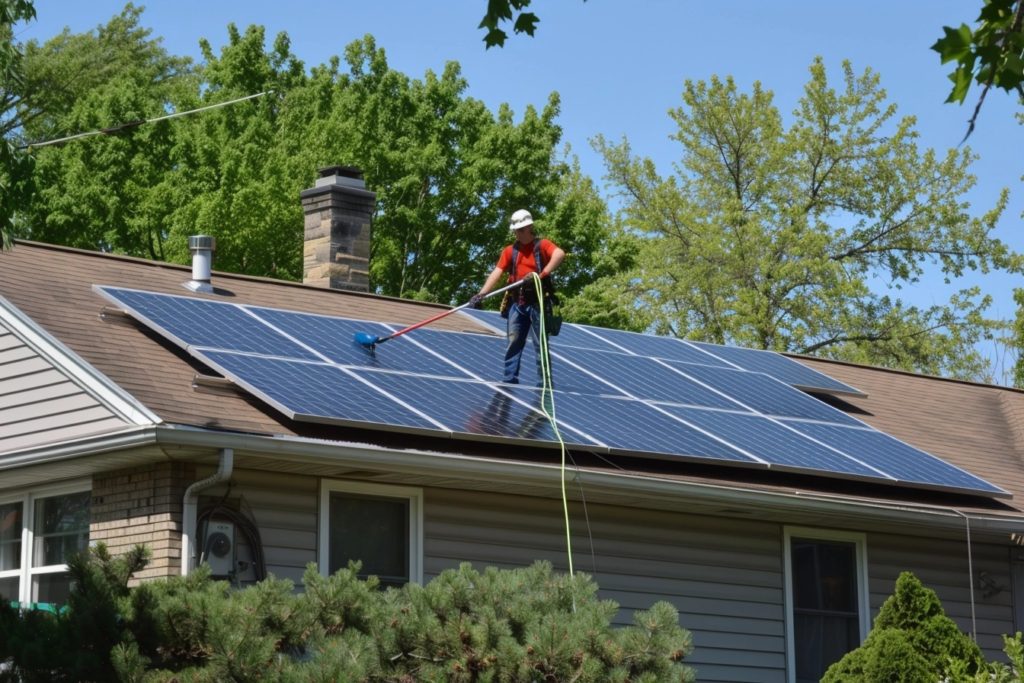
Did you know that around the globe, the annual off-grid solar market serves 420 million people?
As the advent of solar energy has led many Americans to install solar panels on their roof, the number of solar panels in circulation in the off-grid market has also increased. It’s much easier than ever before to go off the electrical grid with your grid homes and have endless power wherever you live.
This goes for individuals with mobile homes or tiny homes that travel around, as well as individuals who simply want to be disconnected from the local power grid.
Are you interested in taking your house solar using an off-grid system? Are you wondering how many solar panels to run a house off-grid you’ll need?
In this article, we will help you with calculating the number of panels you’ll need using the amount of electricity your system uses.
What Is Solar Power?
Solar power is the process of turning the energy from the sun into heat or electricity. Solar energy is the most abundant source of renewable energy, and the United States has some of the best solar resources in the world.
Solar technologies can use this energy to do a lot of different things, like making electricity, lighting up a room, or making it more comfortable. They can also work to heat water for home, business, or industrial use.
This can be used to power all types of devices, small electronics like remotes and construction signs, to residential properties and large businesses. Depending on the use, each of these can be an efficient replacement for the existing energy production and storage system.
How Does Solar Power Work?
Solar PV panels are made up of many small photovoltaic cells. Photovoltaic means that the cells can turn energy from the sun into electrical energy. These cells can be stacked together to scale upward and create a larger output of energy.
Most of the time, these cells are made of silicon, which is a semi-conductive material that can conduct electricity while keeping the electrical imbalance that is needed to make an electric field.
Basic Panel Technology
Sunlight will strike the semiconductor, and the energy is issued out in terms of photons. The photons then knock loose nearby electrons, which are then free to move around in the cell. Polar semiconductors are placed between each other in the solar cell to create an electric field (see the image to the left for a visualization).
This electric field pushes the free electrons in a certain direction, towards the metal plates that line the cell and make it conduct electricity. This flow is called an energy current, and how much electricity each cell can make is based on how strong the current is.
Once the free electrons hit the metal plates, the current is sent into wires, which lets the electrons flow like they would in any other way electrical system.
As the solar panel creates an electric current, the energy flows through a series of wires to an inverter. Even though solar panels make direct current electricity, most buildings need alternating current electricity to run. The job of the inverter is to change the electricity from DC to AC so that it can be used in everyday life.
After the electricity is changed into a form that can be used, it is sent from the inverter to the electrical panel or breaker box and sent into the building to be used where needed. Solar energy can then be used to easily power lights, appliances, and other electrical devices.
Through the utility meter, the breaker box sends a surplus that is not used back to the grid. The utility meter keeps track of how much electricity goes from the grid to your home and back again.
Giving Back
When your solar energy system produces more electricity than you use at home in the average day, this meter actually turns backward. Through a process called “net metering,” you get credit for the extra electricity you make.
When you need more power than your solar array can give you, you can get extra power from the grid through this meter. This keeps everything running normally.
Unless you have a storage solution that lets you live completely off the grid, it’s possible you will need to get some energy from the grid, especially at night when your solar array isn’t producing. But a lot of this grid energy will be made up for by the extra solar energy you make during the day when you aren’t using as much.
How Much Power Can Come From One Solar Panel?
There are many different kinds of solar panels for homes, and not all of them are the same. And not all of them make the same amount of electricity.
Solar panels are rated by how many watts of electricity they make. More power will be made by your solar installation if the wattage rating is higher.
The power output of most residential solar panels ranges from 250 to 400 watts, depending on the size of the panel and how efficiently it turns sunlight into energy. Even though higher power ratings are better, power output is not the only way to judge how well a solar panel works.
For example, two solar panels may both have an efficiency rating of 15%, but one may produce 250 watts of power while the other produces 300 watts.
The higher output may just be because the 300-watt panel is bigger, not because it is more efficient or has better technology. So, panel efficiency is a better measure of how well solar panels meet your energy needs than just the amount of power they produce.
What Is Off-Grid vs. On-Grid
How does an off-grid system compare to an on-grid system? Here are the main differences:
Off-Grid
Even in the middle of winter, when there is less sun, an off-grid solar system is sufficient to make enough electricity for a home’s needs. But since an off-grid solar system doesn’t connect to the electricity grid, it needs batteries to store energy.
Because batteries and inverters are so expensive, off-grid solar systems are usually more expensive than other options. Because of this, they are usually only used in more remote areas that are far from the grid. Still, the price of batteries continues to go down in most regions, so even in cities and towns, the number of people who want an off-grid solar system is rising.
Off-Grid Pros
- A solar system like this can work without being connected to the grid.
- They make enough power that it can be stored and used at night.
- These are good for places that are far away and don’t have access to the power grid.
- The power supply won’t be affected by shutdowns or problems with the local infrastructure.
On-Grid Solar System
On-grid solar systems are the most common way for homeowners to use solar power. These systems are hooked up to the public electricity grid and use solar inverters. They don’t need batteries.
If you have more solar power than you need, you can sell it to the electricity grid. When you sell energy, you usually get utility credits or other compensation.
Solar inverters are an important part of a home solar energy system. They take the electricity that your solar panels make and turn it into a form that your appliances, lights, and other electronics can use.
Unlike an off-grid solar system, these can’t work or make electricity when the power goes out. This is for safety reasons.
Since blackouts usually happen when the electricity grid goes down, if the solar inverter sent power into a broken grid, it would put the people who were fixing the network’s problems in danger.
Most solar systems that are connected to the grid and have batteries can disconnect from the grid and still provide some power during a blackout. This is called “islanding.”
On Grid Pros
- On-grid solar power systems are very cheap and easy to set up.
- You can get your money back if you pay off your electricity bills in about 3 to 8 years. This will take less time if you use incentives
- The extra energy that the system makes can be used to make money for the people who live there.
- Solar power systems are a clean, renewable source of energy that can be used over and over again. Depending on the type of system you choose, they can help you in many ways.
Knowing the pros and cons of both on-grid and off-grid solar systems will help you choose the best one for your needs. With the right solar system and the right installation, you can get clean, cheap energy without having to worry about problems with maintenance.
How Many Solar Panels to Run a House Off-Grid: The Cost
For this example, let’s say you have some 300-watt solar panels and want to power your home with them. You don’t have access to the grid, so the best way to meet your energy needs is to install off-grid solar on your home.
Let’s say that each panel on your roof gets about 8 hours of sunlight per day. A 300-watt solar panel that gets 8 hours of sunlight a day will make almost 2.5 kilowatt-hours of electricity each day. If we multiply this by the number of days in a year, we get about 900 kilowatt-hours of power from the sun. In short, each panel will give off 900 kilowatt-hours of electricity every year.
How much power does your house take up? Most data show that a typical American home of 2,000 square feet uses about 11,000 kilowatt-hours of electricity each year.
So, if we divide our total energy use by how much one solar panel is expected to produce, we can see that about thirteen panels of this size would be enough to power a home of that size.
Compare that to your average utility bill per kilowatt hour to see the cost and how much you could save.
If you have a small house or are powering an RV, you won’t need as many solar panels because you won’t need as much energy.
Solar Incentives
The government offers a tax credit that can be used to pay for part of the cost of a solar photovoltaic (PV) system. It can be claimed on your tax return each year. There are also credits for other types of renewable energy at the state and local levels.
The system must be put to use during the tax year and power a home in the United States. The IRS doesn’t have a clear definition of what it means for something to be “placed in service,” but it has said that it means the installation is done.
The government extended the credit at the end of 2020. Systems installed in 2020-2022 get a 26% tax credit, and systems installed in 2023 get a 22% tax credit.
A 30% tax credit was available for systems installed before December 31, 2019, but this has ended. The tax credit will end completely in 2024 unless Congress decides to keep it going.
Update: In August 2022, the solar tax credit was increased to 30% and extended through 2032.
Going Solar With Off Grid Homes
At the end of the day, if you’re wondering how many solar panels to run a house off-grid you will need, the answer is probably between 10 to 15. This will depend on how large your home is, how large your panels are, the panel material, and your average daily consumption. Most homes will be able to go off-grid with a number of panels that can easily be mounted on or near the home’s structure.
If you’re interested in learning more about how you could go solar with an off-grid home, please contact us today.




